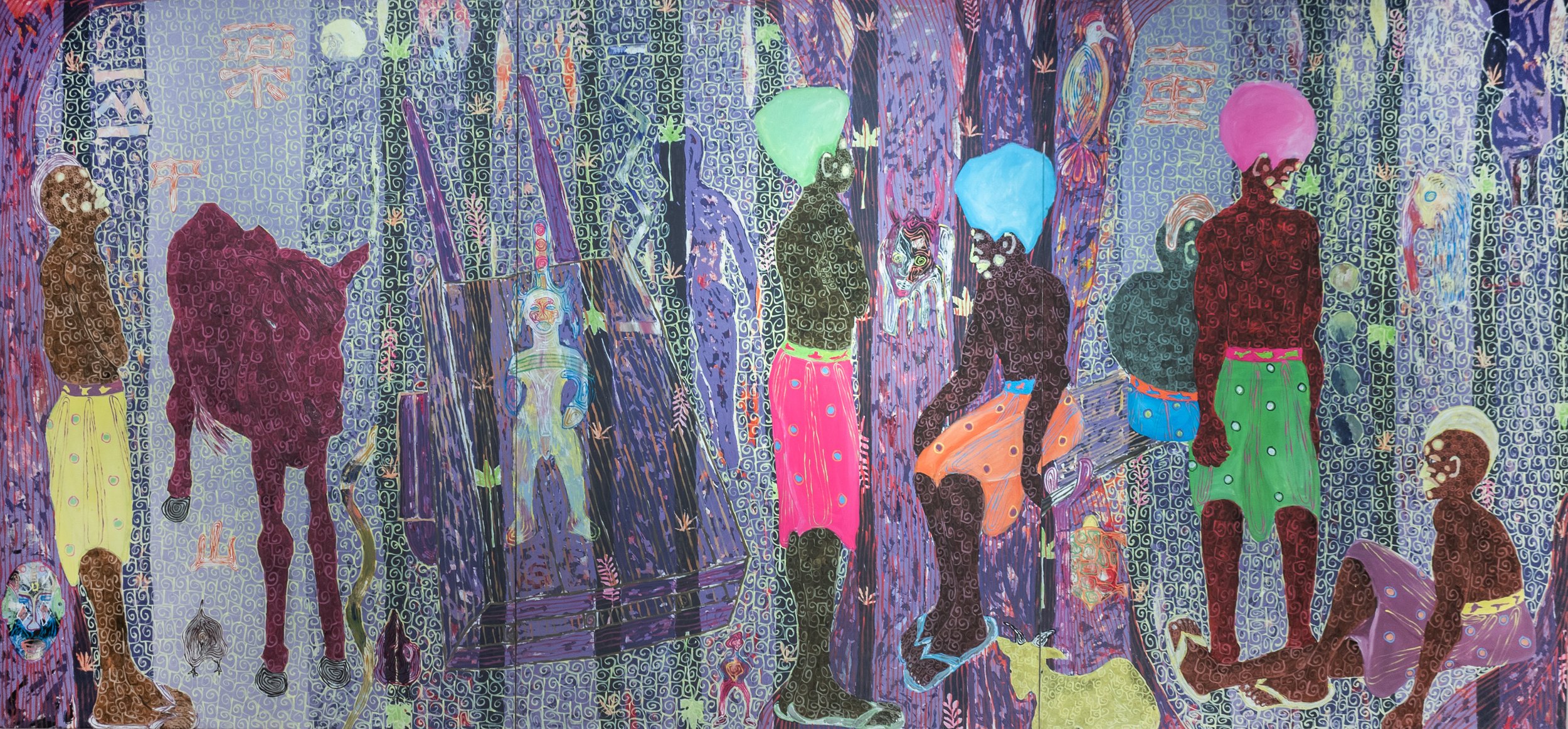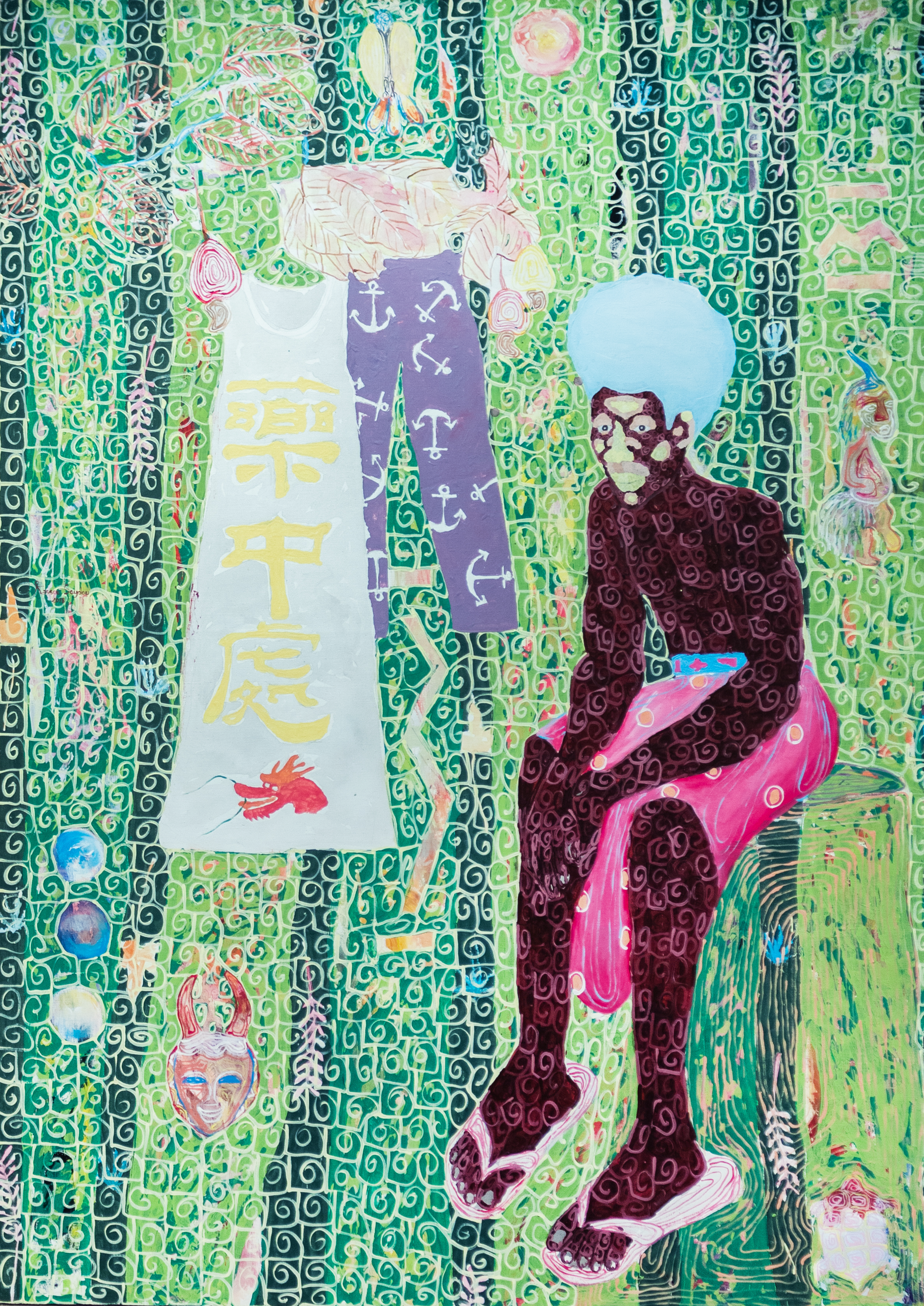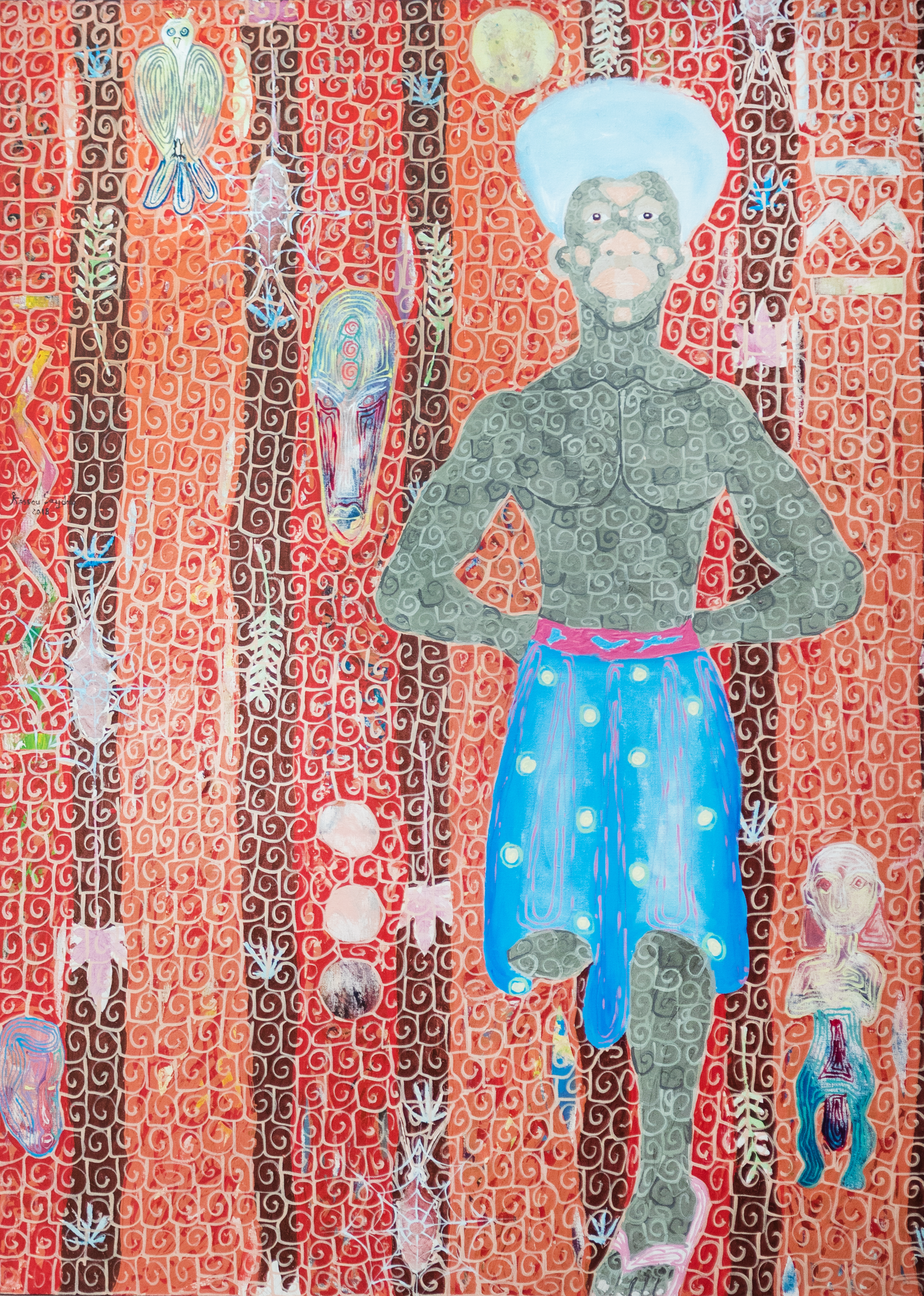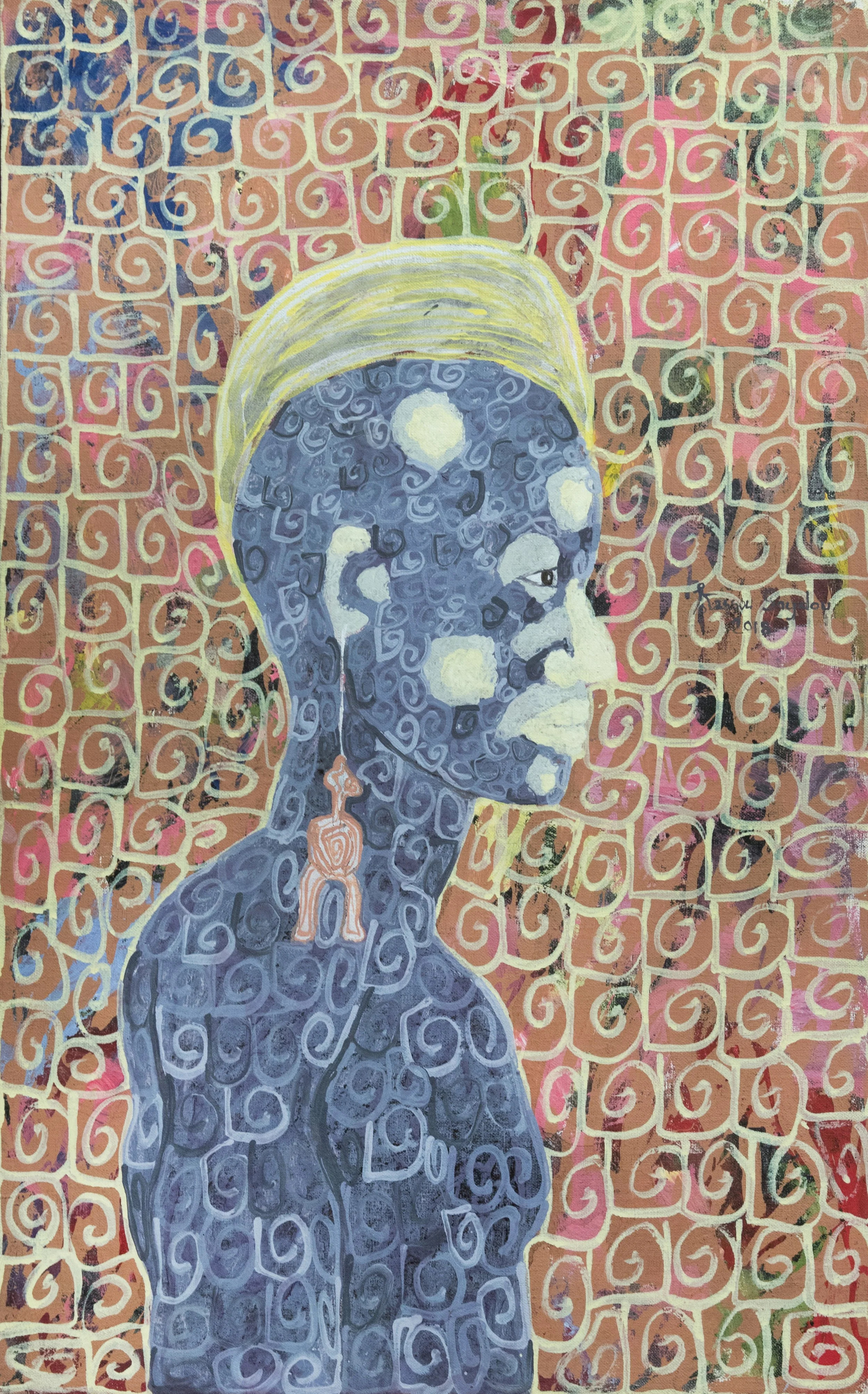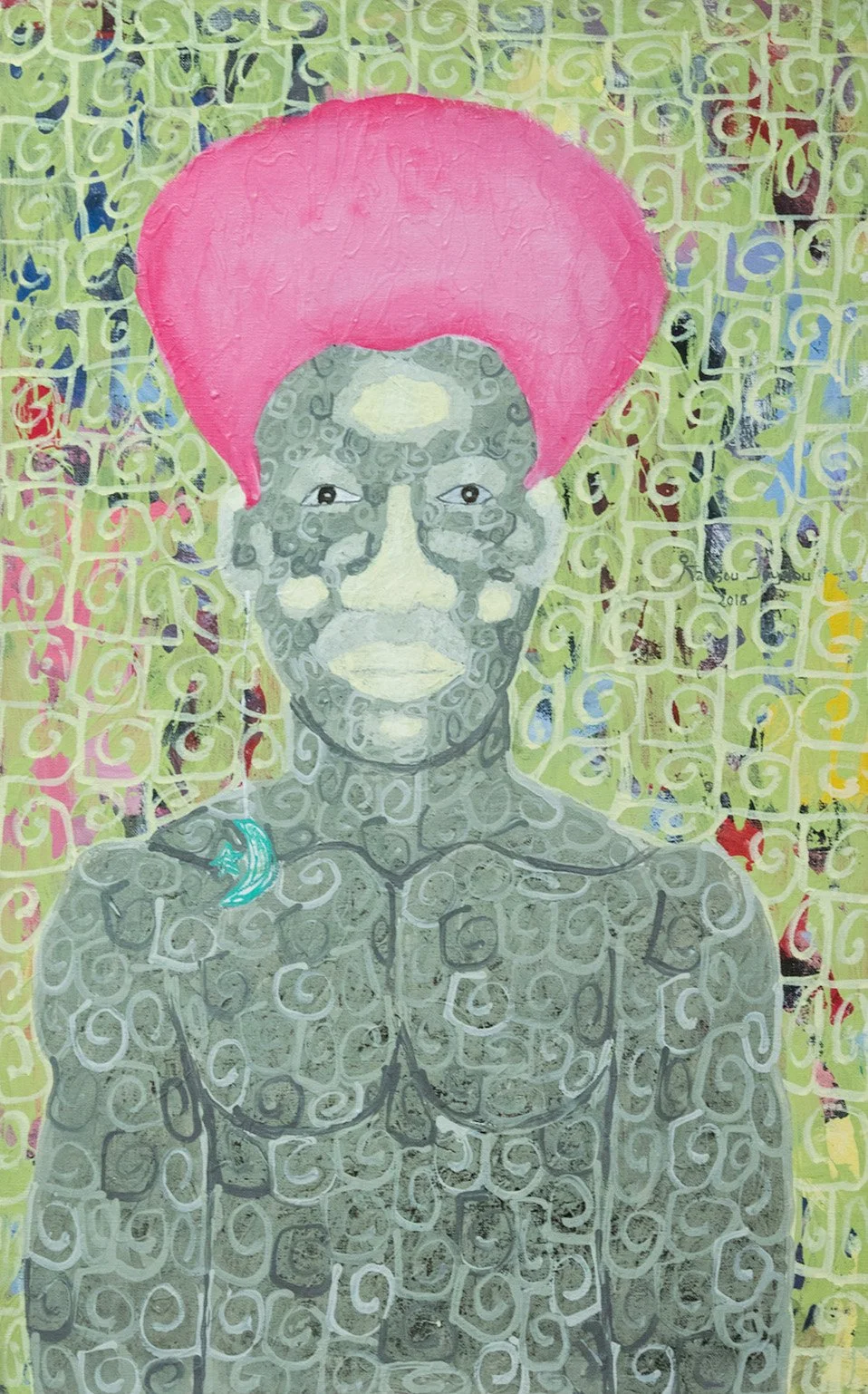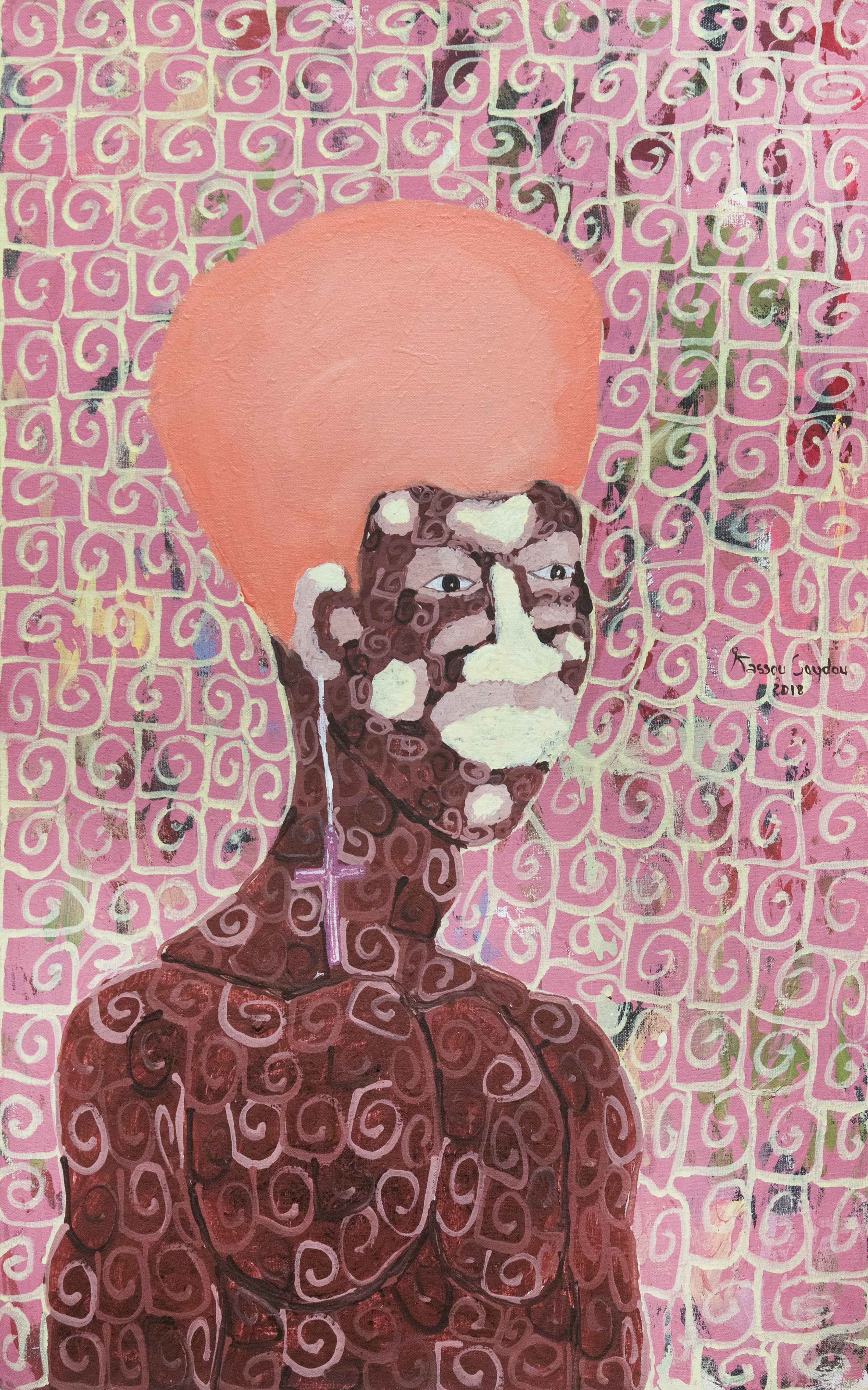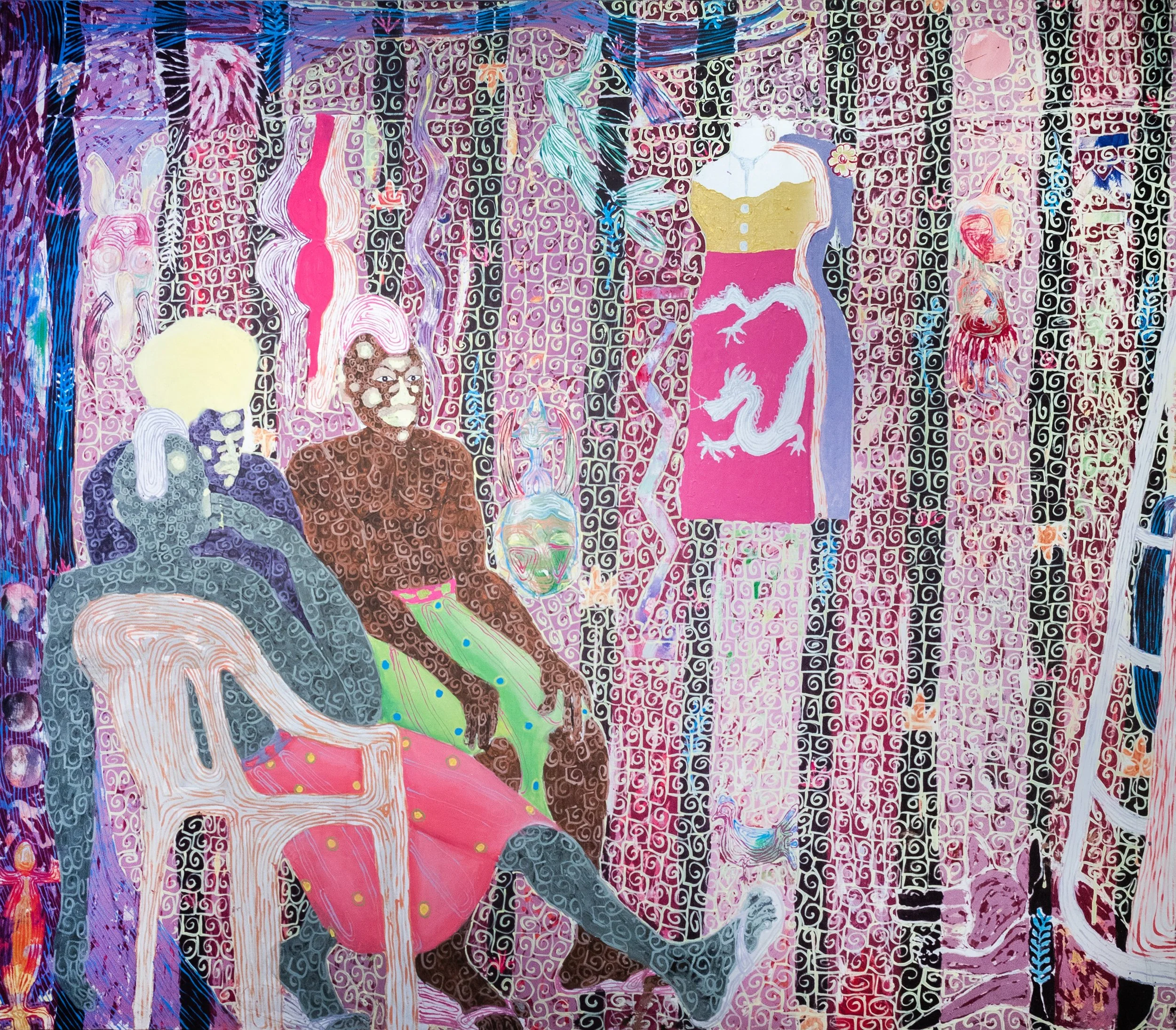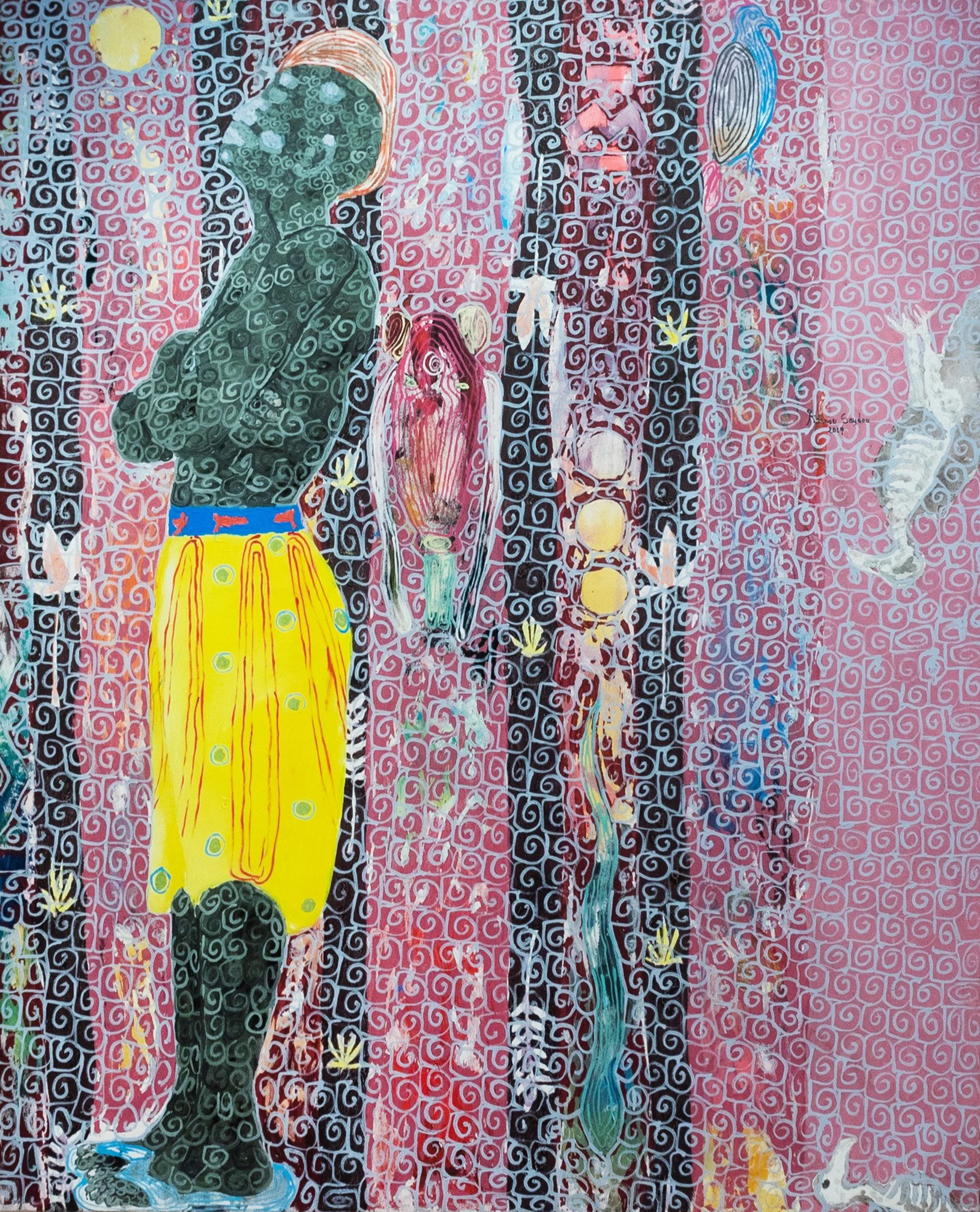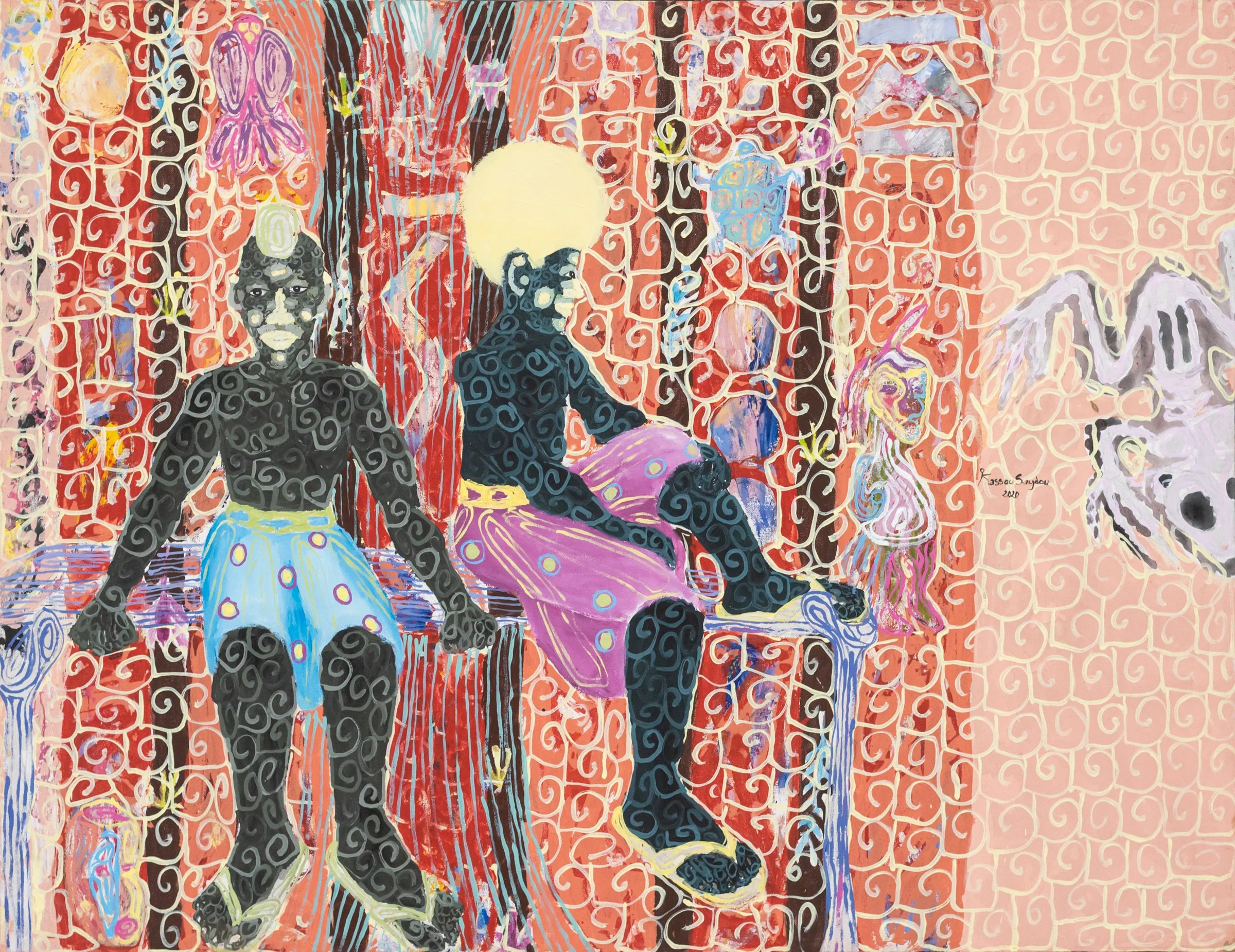HERE COMES
THE SUN
Kassou Seydou
March 27th 2021 - June 30th 2021
The artist’s new series of works is situated at the junction of land and sea, perhaps in that area known as the foreshore, sometimes covered or uncovered by the tides, which carry with them the destinies of their travellers and the anonymous memories of their wrecked victims. Kassou Seydou’s paintings also carry these stories, in a meticulous disorder of upside down figures, emerged or immersed, in cold and warm colours, curves and solids. The spectator plunges with him into this plastic jungle, a dreamlike universe to which the eye gradually gets used to, finding signs or guessing a narrative. Beneath the foam of the sea, those whose gaze crosses our path ask us: what world are these tragedies the witnesses of? When will the waiting end?
Thiaroye, Soumbédioune, Cap Skirring, Djiwalo, as many coastal towns, as many places of departure, whose reverse side would be to be gateways, places of anchorage and of becoming rather than of remembering. Kassou Seydou seeks to question the foundations of the journey, especially when it takes the form of emigration, and even more so when the latter is clandestine and dangerous. What extreme is reached when the only remaining life force is that of risking death? From his studio in Keur Massar, where the artist has lived since 2016, the artist observes, listens and wonders. His paintings lead us, with their hypnotic spirals, beyond morality and judgement, towards an introspection of feelings and collective human consciousness.
The village of Thiaroye, for example, on the outskirts of Dakar, is sadly known for the massacre of African soldiers recently demobilised by France. It is a place of symbols (injustice, lack of recognition, the futile journey), but it is also a seaside village, a place of tourism, a place of daily life and fishing. The town of Thiaroyethus bears witness to these links between arrival and departure, between land and sea, in the manner of communicating vessels, and also bears witness to the coexistence in our time of two parallel realities of travel and crossing.
From ochre to icy blue, from green to orange, the artist’s palette navigates between land and sea, between jungle and ocean, a space inhabited by fantastic creatures, marine or terrestrial. The characters that populate the artist’s canvases and imagination, slender figures with eternal coloured hairstyles and plastic shoes, question the viewer about the sense of desire, expectation and hope that emanates from the journey. Subtly, Kassou Seydou seems to suggest that the answers must first be found within ourselves, that there is no inner wreck that cannot be solved and thus invites us to cherish the beauty of the chaos dancing within each of us.
The works Borom Daleyi and Les richesses de je-ne-sais-où comes from a precedent series of work, from the end of the year 2019. The work is particularly striking as the hues of this work are quite unusual in the artist's palette - a variation of light blues, water greens, polar mauves. Colours of the wave for a painter of fire. In his studio, Kassou Seydou paints under the sun's rays in Keur Massar, a suburb of Dakar. The bright natural light is a tool influencing both the construction of the pictorial space and the intensity of the colours. The sun as an all-powerful filter in art as well as in life.
As always with Kassou Seydou, the eye requires to decipher a space it is not used to see. Sometimes in the artist’s works, this remarkable phenomenon occurs, which consists in an abstraction of the gaze due to the high density of figurative forms. One then observes the succession of coloured stripes in the background, the figures of the characters and their luminous clothing, the curvilinear lines that bring everything together, and one could see it as a scene in its broad outline. Yet the depth of Kassou Seydou's works requires time to accommodate. No perspective lines, no play of light and shadow that come to structure the image as in classical painting, but a subtle balance between the proportions of the characters and their placement in the frame. Each element can only be understood in the space of the canvas in interdependence with each other. Here, the aesthetic principle reveals the artist's vision and the message of the work.
In every of his works, Kassou Seydou seeks to paint contemporary Senegalese society by inserting into sometimes complex scenes the clues of a path to be followed towards harmony; that of a world where men and nature would cohabit beyond the relations of predation and consumption; that of a world where men would give faith in the teachings of nature and the past, in the richness of a heritage, in the splendour of a land – and the oceans – we are reminded of through the animal and plant figures that populate the canvas.
When he talks about his work, Kassou Seydou often evokes the fact that everyone’s destiny is written to the world. He tries, in an absolute gesture, to make them visible through the matrix of curvilinear motifs that he extends from canvas to canvas, like a contemporary script. These lines also make me think of time, more precisely of a certain way of apprehending time that one can encounter in West Africa when observing life in the interstices of global metropolises. Finally, Kassou Seydou's message remains no less universal, like the signs borrowed from various cultures, Chinese, cabbalistic, whose symbolic and signifying force goes beyond mere geographical location. The message is indeed one of anchoring and transmission. As a meditative image, his works are a time of thought, a parenthesis to reinvent our being in the world, with others and for others; with the world and for the world.
Dar Salame (Triptyque), 2018 Acrylic on canvas 180 x 130 cm each
Dibou Kenjou Weup (L’anacardier), 2018 Acrylic on canvas 180 x 130 cm
Do Moon, 2018 Acrylic on canvas 180 x 130 cm
One Human, One World I, 2018 Acrylic on canvas 80 x 50 cm
One Human, One World II, 2018 Acrylic on canvas 80 x 50 cm
One Human, One World III, 2018 Acrylic on canvas 80 x 50 cm
Blue Bantamba, 2018 Acrylic on canvas 210 x 240 cm
Red Bantamba, 2018 Acrylic on canvas 210 x 240 cm
Tabalou Aicha (La table d’Aïcha), 2020 Acrylic on canvas 130 x 100 cm
Bi Walla Bi, 2020 Acrylic on canvas 180 x 150 cm
Mom ak taanbi, 2017 Acrylic on canvas 160 x 130 cm
Do Mom 1, 2020 Acrylic on canvas 130 x 100 cm






